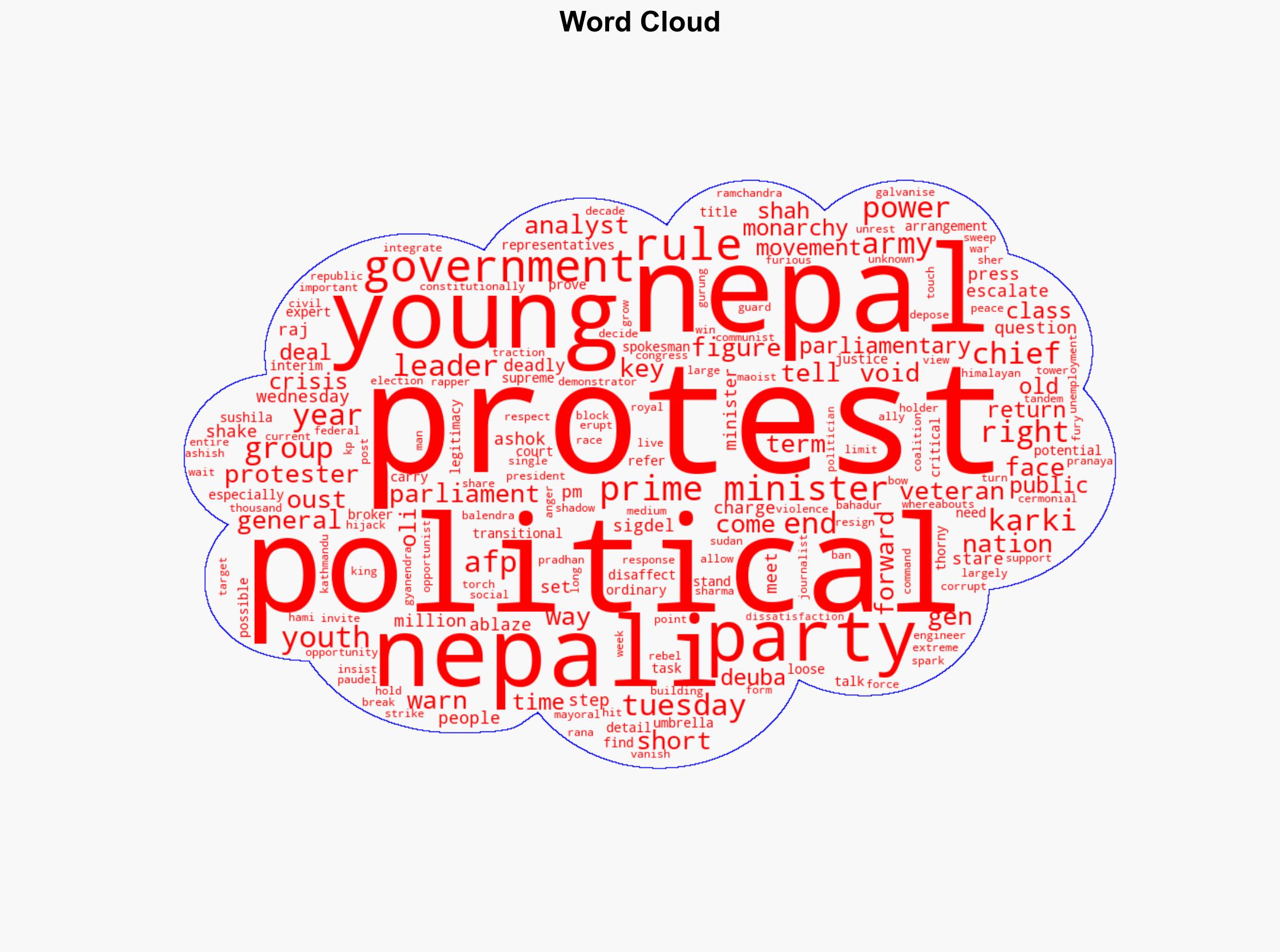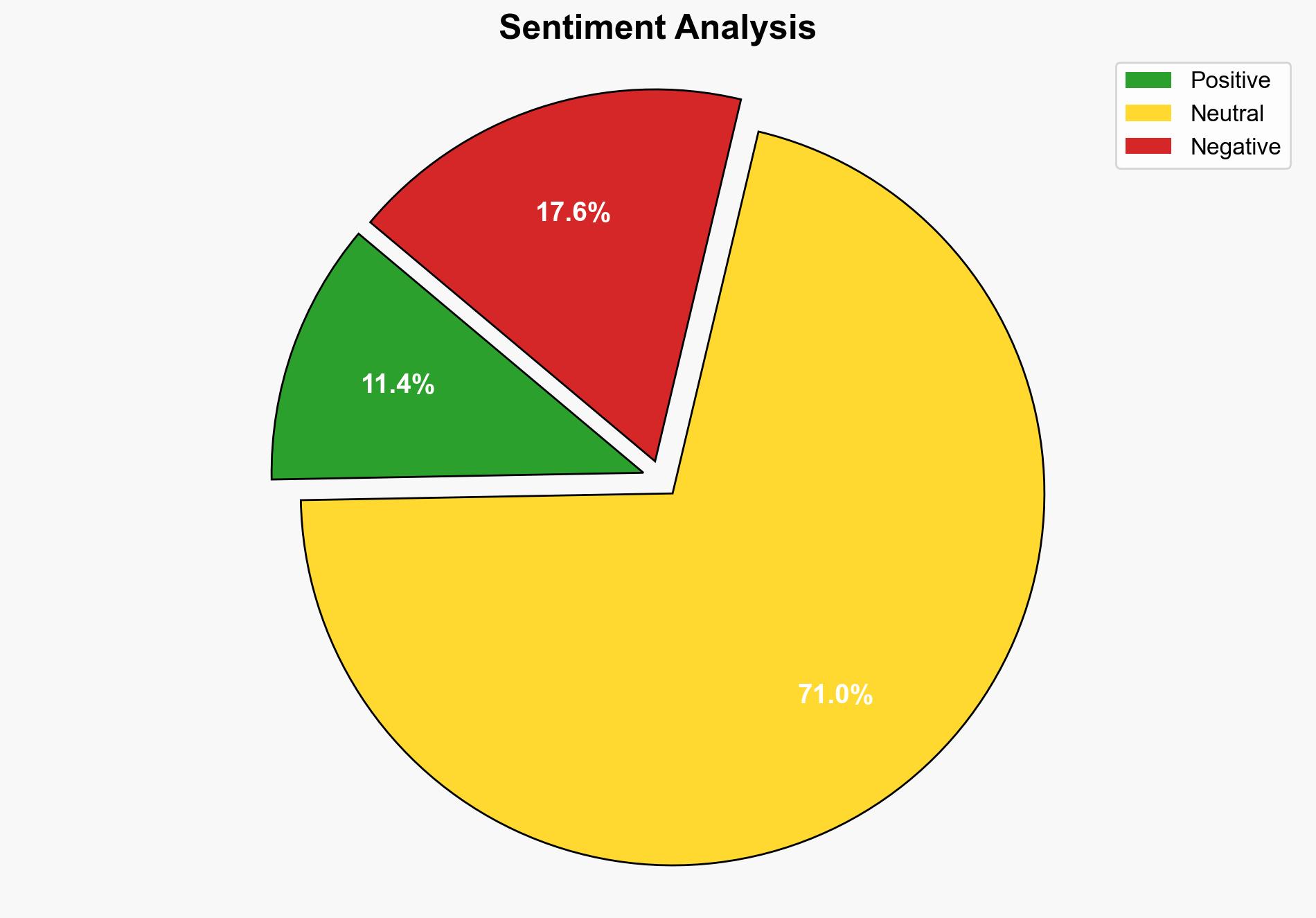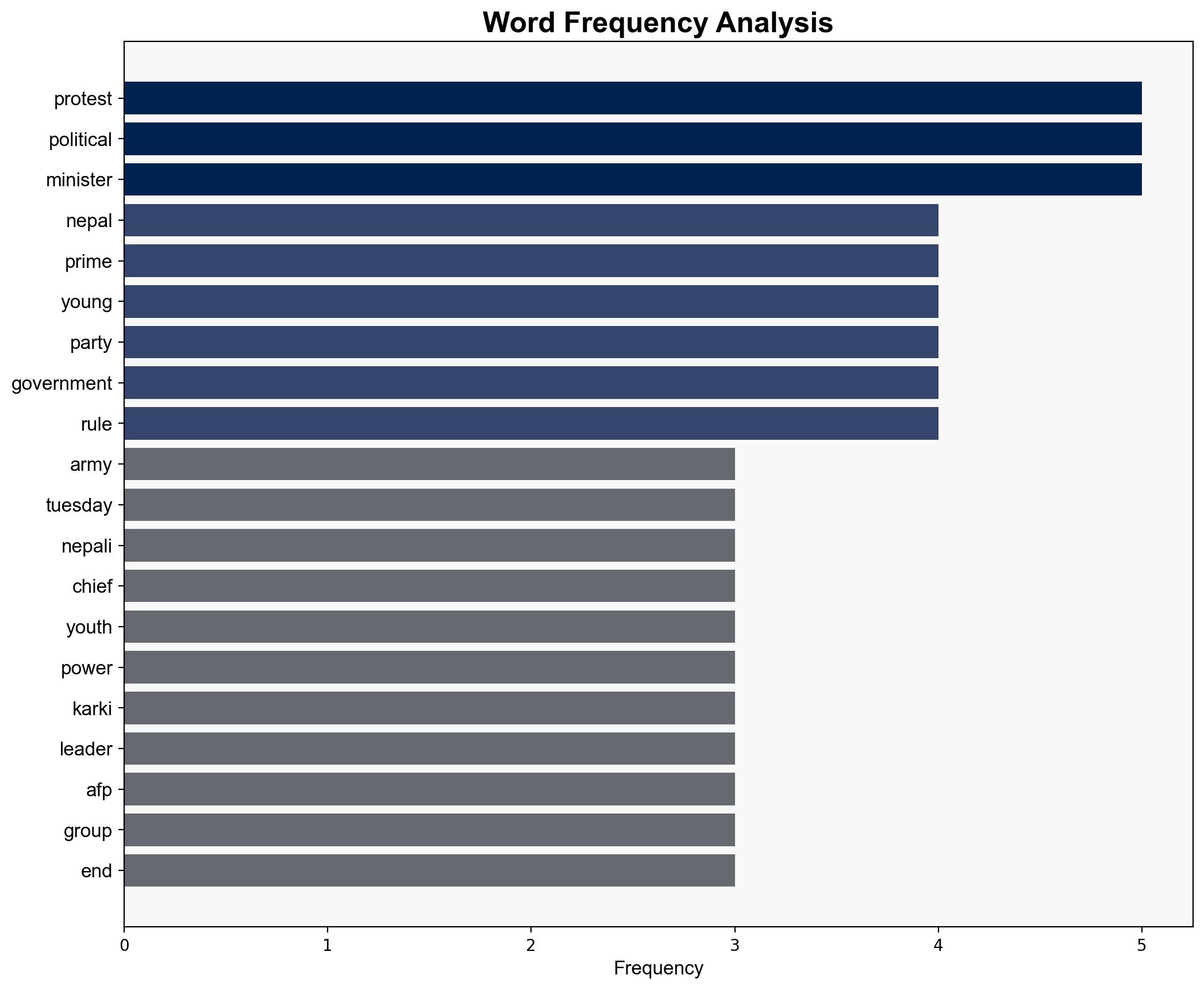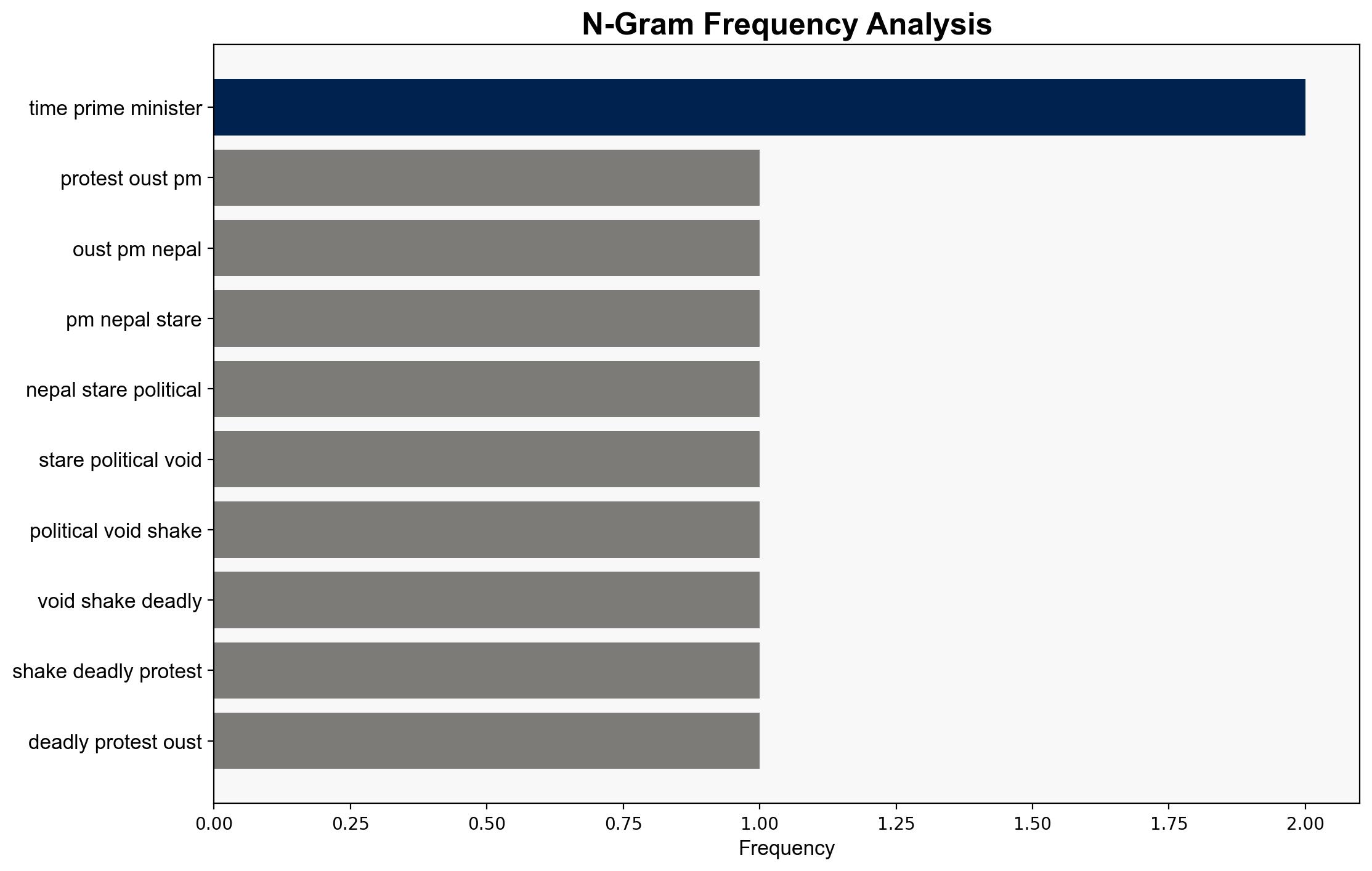After Protests Oust PM Nepal Stares Into Political Void – International Business Times
Published on: 2025-09-11
Intelligence Report: After Protests Oust PM Nepal Stares Into Political Void – International Business Times
1. BLUF (Bottom Line Up Front)
Nepal is experiencing a significant political crisis following the ousting of its Prime Minister amidst widespread protests. The most supported hypothesis is that Nepal will struggle to establish a stable interim government, leading to prolonged political instability. Confidence level: Moderate. Recommended action: Monitor developments closely and engage with regional partners to support democratic processes and stability.
2. Competing Hypotheses
Hypothesis 1: Nepal will establish a stable interim government led by a respected figure like Sushila Karki, which will restore order and pave the way for new elections.
Hypothesis 2: Nepal will face prolonged political instability due to the inability to form a legitimate interim government, exacerbating public dissatisfaction and potentially leading to further unrest.
Using ACH 2.0, Hypothesis 2 is better supported due to the lack of consensus among political parties and the deep-seated public distrust of the political class. The absence of a clear transitional leader and the potential for opportunistic factions to exploit the situation further weaken the prospects for stability.
3. Key Assumptions and Red Flags
Assumptions:
– The political class is willing to cooperate to form an interim government.
– Public protests will not escalate into widespread violence.
Red Flags:
– No clear consensus on leadership among political parties.
– Potential for opportunistic factions to hijack the movement.
– Historical precedent of political instability following leadership vacuums.
4. Implications and Strategic Risks
The political void in Nepal could lead to economic instability, affecting regional trade and security. The risk of cyber threats and misinformation campaigns could increase, exploiting the chaotic environment. Geopolitically, prolonged instability may invite external influence from neighboring countries seeking to expand their regional power.
5. Recommendations and Outlook
- Engage with regional partners to support democratic processes and stability in Nepal.
- Encourage dialogue among political factions to reach a consensus on interim leadership.
- Monitor for signs of external influence or opportunistic factions exacerbating instability.
- Scenario Projections:
- Best Case: A respected interim leader is appointed, leading to peaceful elections and restored stability.
- Worst Case: Prolonged instability leads to economic collapse and increased regional tensions.
- Most Likely: Continued political uncertainty with sporadic unrest and slow progress towards elections.
6. Key Individuals and Entities
– Sushila Karki
– Ashok Raj Sigdel
– Balendra Shah
– Sudhan Gurung
– KP Sharma Oli
– Sher Bahadur Deuba
– Ramchandra Paudel
7. Thematic Tags
national security threats, political instability, regional focus, democratic processes




